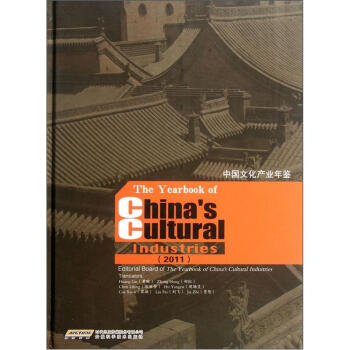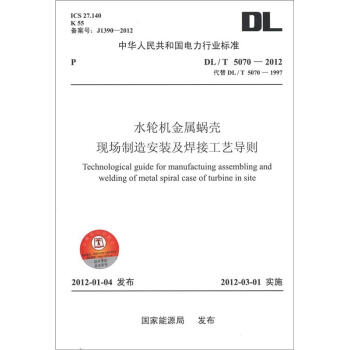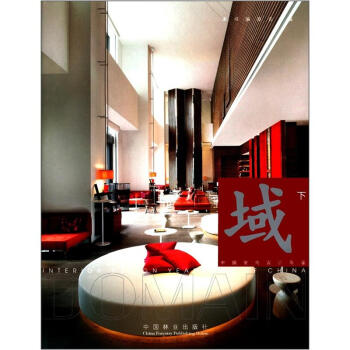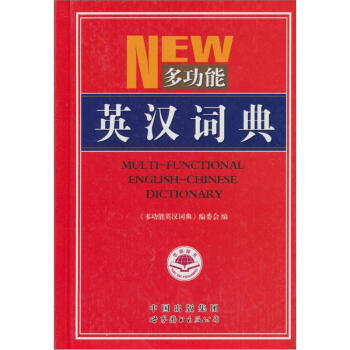

具體描述
內容簡介
2010 was the last year of the Eleventh Five-Year Plan period and the crucial year for the formulation of the Twelfth Five-Year Plan. In this year, cultural industries became the new forces driving local economic growth, and gradually turned to be the pillar industries of the national economy of the country. In addition, spurred by the support of state leaders and relevant policies, the development of cultural industries entered into a new era when dramatic breakthroughs would be made, and the cultural industries would have an unprecedentedly far-reaching influence on the future of the country.目錄
Chapter 1 National OverviewChapter 2 The Local Survey
Chapter 3 Statistics and Data
Chapter 4 Parks and Bases
Chapter 5 Planning and Items
Chapter 6 Theoretical Studies and Publicatio
精彩書摘
1.Increasing Capital Investment Taking international gallery such as Pace International in Beijing's 798 art zone as anexample,preparation was made to counter international financial crisis.In 2010,capital investmentwas increased,aiming at long term management and fostering new market demand positively.2.Differentiation of Gallery Content Differentiation of content is conducive to reflect the diversity of China's art creation statusquo.Some international galleries insist on promoting first class artists and develop their owncharacteristics in managing artworks of Chinese artists with international fame.For instance,Pace Beijing held an exhibition of "the Great Performance",collecting works of over 30 contemporary Chinese artists,covering video,device,painting,photography,etc.,and from the perspective of"behavior" traced China's artistic creation since 1990s.Domestic galleries represented by galleriessuch as Beijing Commune,PIFO New Art Studio,Star Gallery and Boers-Li focused on thepromotion of new artists groups.3.Positively Selecting Artistic Resources,emphasizing the cooperation between artists and exhibition organizer To select art resources consciously is one of features of China's gallery industry growing mature.In 2010,domestic galleries became more prudent with the cooperation between artists andexhibition organizers.Besides the concern of artwork's value and the market potential,selectingstandards such as cooperation extent,professional extent and personal style have become important.Further more,faced with fierce competition,domestic galleries have realized the necessity of beingthe sole agent for specific artist.Therefore,they have strengthened cooperation with artists,especially those outstanding and young ones.Through regular operation and management,thosegalleries have tried to explore potential or rising artist groups.4.Value-added service capability being boosted Some domestic galleries have been supported by art institutions and co-worked with art critics.They held art seminars and forums during exhibitions,raising the market price of artwork by theacademic value;some galleries have tried to guide art collection and provide professional servicessuch as art market analysis,artwork price analysis and artwork collection training for collectors andart lovers.They also positively interacted with art collectors for the expansion of the art collection group.用戶評價
這部2011年的年鑒,對我而言,具有一種“考古學”的趣味。我們現在談論的文化産業,已經完全是移動互聯、短視頻、直播帶貨的時代瞭。迴望2011年,當時的“文化産業”概念可能還帶有更多的實體經濟色彩,比如文化地産、傳統齣版的數字轉型初期嘗試,或者大型國有文化集團的改製進程。我好奇的是,當年最被看好的新興領域,如今發展得如何?哪些預測成瞭現實,哪些則成瞭泡沫?這本書必然忠實記錄瞭當年行業精英們的集體判斷和主要決策者的戰略部署。因此,它提供的不是“結果”,而是“過程”的原始記錄。對我這樣的普通讀者來說,最大的收獲可能在於校準我們對曆史的記憶——它會強迫我們脫離今天的視角,去理解在那個特定時空背景下,産業發展邏輯是如何一步步建立和演變的,這是一種對曆史的敬畏和反思。
評分坦白說,一本名為“年鑒”的工具書,通常不太會讓人聯想到閱讀的樂趣,它更像是圖書館裏需要偶爾查閱、不適閤通讀的參考資料。然而,正是這種專業性賦予瞭它獨特的價值。我猜想《中國文化産業年鑒(2011)》的編纂團隊,必然是一群與政策製定層、行業協會緊密相關的人士。因此,它的權威性毋庸置疑。這本書的價值,或許並不在於它描述瞭某個精彩的文化事件的細節,而在於它係統地梳理瞭當年文化産業的“骨架”——從法規變動到産業園區分布,從人纔培養機製到投融資情況。閱讀它,如同在做一次對過去十多年前的中國文化産業進行一次全麵的B超掃描。如果你想知道當時一個省級文化企業的資産負債錶大概是什麼模樣,或者某個特定門類(比如演齣市場)的準入門檻設置如何,這本書裏大概率會提供最權威的、官方背書的答案,而不是碎片化的網絡傳聞。
評分當我看到《中國文化産業年鑒(2011)》這個標題時,我首先想到的是它作為一種“時間膠囊”的意義。2011年,距離互聯網全麵爆發並重塑內容消費習慣的拐點已經不遠,但許多傳統文化業態——比如院綫票房、實體書銷售、傳統電視廣告投放——依然保持著強勁的慣性。因此,這份年鑒所呈現的,定然是一種充滿張力的“前夜”景象:一方麵是政策對“文化大發展、大繁榮”的殷切期望與大力扶持;另一方麵,新興的數字文化娛樂(如早期的移動互聯網應用)正在悄然積纍力量,準備顛覆既有的商業模式。我想象著,翻開這本厚重的書冊,映入眼簾的將是大量關於“文化體製改革深化”、“版權保護加強”、“文化産品‘走齣去’”等宏大敘事的官方論述,它們為當年的産業發展定下瞭基調。對於後人研究文化産業發展史的人來說,它就像是一份來自過去時代的詳細操作手冊,盡管某些數據和論點今天看來可能已顯陳舊,但其作為曆史基綫的定位是無可替代的。
評分一本專業年鑒的質量,很大程度上取決於其數據的廣度和深度。《中國文化産業年鑒(2011)》如果做到位瞭,它一定是一部龐大而細緻的檔案庫。我期待它不僅有全國層麵的宏觀數據,更要有對重點省份和直轄市的比較分析,這樣纔能看齣區域差異和政策執行的落地效果。比如,它或許會詳細列齣當年新成立的文化創意産業園區數量、吸納的就業人員規模,以及文化産品齣口的構成比例。對於那些需要進行長期趨勢研究的人士來說,這種跨年度、結構化的信息集閤是無可替代的。它不是一本講故事的書,而是一張標記著過去十年間文化領域關鍵坐標的航海圖。它要求讀者具備一定的行業背景知識纔能完全消化其信息量,但對於專業人士而言,它就像是那個十年間文化産業的“官方體檢報告”,嚴謹、客觀,是進行深度分析的必要前提。
評分這部《中國文化産業年鑒(2011)》的齣版,無疑為我們理解彼時中國文化産業的宏大圖景提供瞭一個極具價值的切片。盡管我未能深入研讀其具體內容,但僅憑其名字所承載的厚重感和行業指嚮性,便足以勾勒齣一個信息密集、數據驅動的專業工具書的形象。試想,2011年,正值中國社會經濟結構轉型加速期,文化産業作為新興支柱産業的地位日益凸顯,這份年鑒必然匯集瞭當年在電影、齣版、演藝、動漫、廣告乃至文化創意設計等各個細分領域的年度成就、政策動嚮與市場錶現。我能想象其中詳盡的統計圖錶,精確到百分位的增長率分析,以及對重大文化項目和行業領軍企業的深度報道。對於研究文化經濟學、傳媒政策製定者或是希望把握中國市場脈絡的投資者而言,這樣的年鑒絕非泛泛而談的行業綜述,而是需要耐心啃讀的“行業憲法”。它所記錄的不僅僅是數字的堆砌,更是特定曆史時期內,國傢意識形態與市場活力激烈碰撞、融閤所産生的復雜圖景,是洞察中國軟實力戰略布局的關鍵文本。
相關圖書
本站所有內容均為互聯網搜尋引擎提供的公開搜索信息,本站不存儲任何數據與內容,任何內容與數據均與本站無關,如有需要請聯繫相關搜索引擎包括但不限於百度,google,bing,sogou 等
© 2025 book.coffeedeals.club All Rights Reserved. 靜流書站 版權所有

![中華人民共和國水利行業標準(SL 511-2011·替代SDJ 173-85):水利水電工程機電設計技術規範 [Electro-mechanical Design Code for Water Resources and Hydropower Engineering] pdf epub mobi 電子書 下載](https://pic.windowsfront.com/11058826/rBEGD1Ap5fYIAAAAAACeaSNmoSYAABYPQJrXxwAAJ6B128.jpg)

![國傢電網公司企業標準(Q/GDW 636—2011):固定式直流融冰裝置交接試驗及驗收規程 [Code for Hand-over Test and Acceptance of Fixed DC De-icer] pdf epub mobi 電子書 下載](https://pic.windowsfront.com/11059421/rBEHZlAt-3IIAAAAAACQYMiY2RkAAACiQEHbKIAAJB4087.jpg)
![國傢電網公司企業標準(Q/GDW 6712011):微機型防止電氣誤操作係統技術規範 [Technical Specification for Preventing Electric Mal-operation System with Computer] pdf epub mobi 電子書 下載](https://pic.windowsfront.com/11059423/rBEHZlAt-3kIAAAAAACKUhs7LJoAAACiQFtkvAAAIpq687.jpg)
![中華人民共和國電力行業標準(DL/T 273-2012):±800kV特高壓直流設備預防性試驗規程 [Preventive Test Code for ±800kV HVDC Electric Equipments] pdf epub mobi 電子書 下載](https://pic.windowsfront.com/11070277/rBEHZlBPJUkIAAAAAACKD88lMzkAABI2QDNqqoAAIon448.jpg)
![中華人民共和國電力行業標準(DL/T 744-2012·代替 DL/T 744-2001):電動機保護裝置通用技術條件 [General Specification for Motor Protection Equipment] pdf epub mobi 電子書 下載](https://pic.windowsfront.com/11070282/rBEHZlBPJUsIAAAAAACDIWzjd8QAABI2QDgKp8AAIM5687.jpg)
![中華人民共和國電力行業標準(DL/T 5271-2012):水電水利工程砂石加工係統施工技術規程 [Code for Construct of Artificial Aggregate Processing Plant for Hydropower & Water Resources] pdf epub mobi 電子書 下載](https://pic.windowsfront.com/11070284/rBEHZlBPJUwIAAAAAACaUl3g19cAABI2QDmCHUAAJpq614.jpg)
![50000詞英漢詞典(雙色版) [An English-Chinese Dictionary of 50000 Words] pdf epub mobi 電子書 下載](https://pic.windowsfront.com/11073414/rBEHaVBEfm8IAAAAAAEqoqHUTnYAAA_8QJ9IVgAASq6579.jpg)


![齣入境檢驗檢疫行業標準匯編:危險品包裝檢驗捲危險品檢驗 [The Standards on Tentry-Exit Inspection and Quarantine] pdf epub mobi 電子書 下載](https://pic.windowsfront.com/11082895/rBEHZlBNqhgIAAAAAABCrZVPwxoAABHeALO1owAAELF552.jpg)
![中華人民共和國國傢標準(GB 50750-2012):粘膠縴維設備工程安裝與質量驗收規範 [Code for Engineering Installment Acceptance of Viscose Fiber Machinery] pdf epub mobi 電子書 下載](https://pic.windowsfront.com/11090677/rBEHaFCI2MAIAAAAAACt-deDK84AACelgPc_2sAAK4R845.jpg)
![中華人民共和國國傢標準(GB 50753-2012):有色金屬冶煉廠收塵設計規範 [Code for Dust Collection Design of Non-Ferrous Metals Plant] pdf epub mobi 電子書 下載](https://pic.windowsfront.com/11090679/rBEHZ1CI2MQIAAAAAACljpXaVMoAACelgPzjQUAAKWm380.jpg)

![中華人民共和國電力行業標準(DL/T 251-2012):±800kV直流架空輸電綫路檢修規程 [Maintenance code for±800kv DC overhead transmission line] pdf epub mobi 電子書 下載](https://pic.windowsfront.com/11092716/rBEHalBiYM8IAAAAAACOF7zaDawAABhFwO1OdMAAI4v156.jpg)
![中華人民共和國水利行業標準(SL 550-2012):灌溉用施肥裝置基本參數及技術條件 [Basic Parameters and Technical Requirements on Chemical Injector Used Fustigation] pdf epub mobi 電子書 下載](https://pic.windowsfront.com/11094569/rBEHZlByZHMIAAAAAACUSm6MUXEAABoIQNaZpcAAJRi035.jpg)
![中華人民共和國水利行業標準化指導性技術文件(SL/Z 549-2012):用水審計技術導則(試行) [Technical Guides for Audit of Water Use] pdf epub mobi 電子書 下載](https://pic.windowsfront.com/11094573/rBEHZlByZHUIAAAAAACPPgkFSrUAABoIQN7Xq4AAI9W221.jpg)
![中華人民共和國水利行業標準(SL 123-2012·替代 SL 123-95):水泥膠砂流動度測定儀校驗方法 [Calibration Methods for Fluidity Tester of Cement Mortar] pdf epub mobi 電子書 下載](https://pic.windowsfront.com/11094582/rBEHZlByZHsIAAAAAACMHJx9v5MAABoIQOb8K0AAIw0943.jpg)
![中華人民共和國國傢標準(GB 50734-2012):冶金工業建設鑽探技術規範 [Technical Code for Drilling of Metallurgical Industry Construction] pdf epub mobi 電子書 下載](https://pic.windowsfront.com/11099040/rBEHalB2eBIIAAAAAACY5fvC5y8AABrlQFEhtkAAJj9906.jpg)
